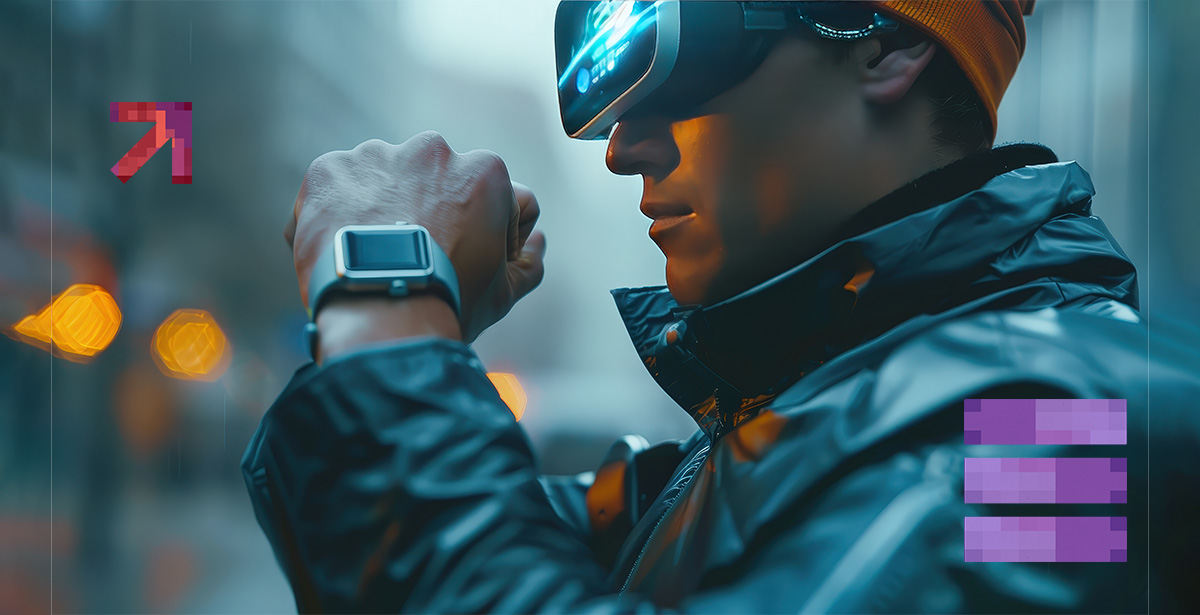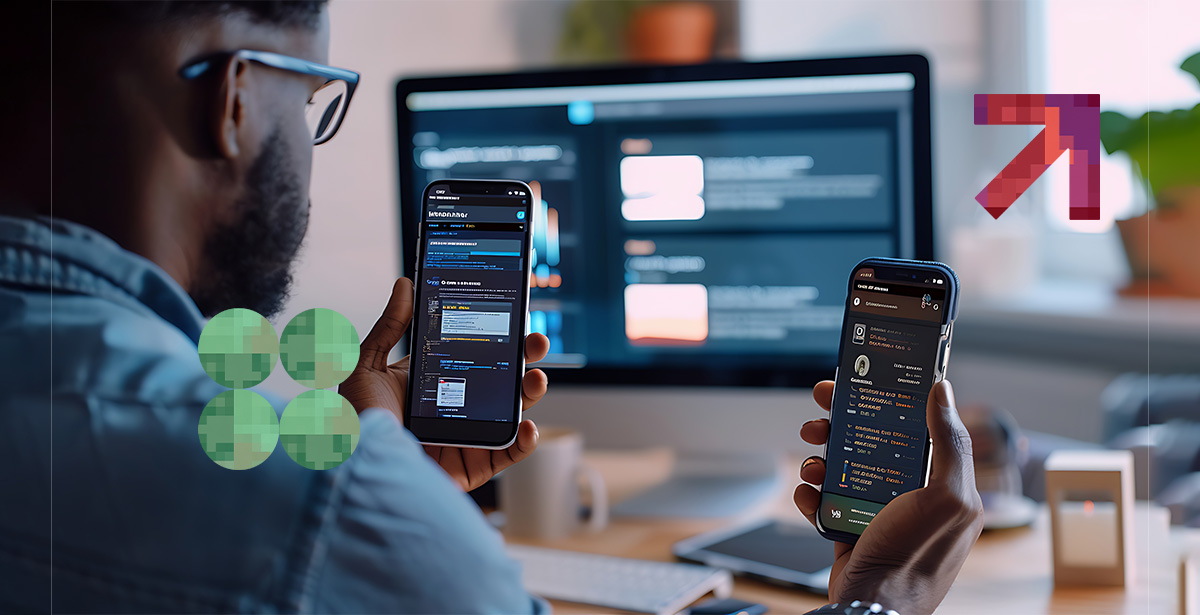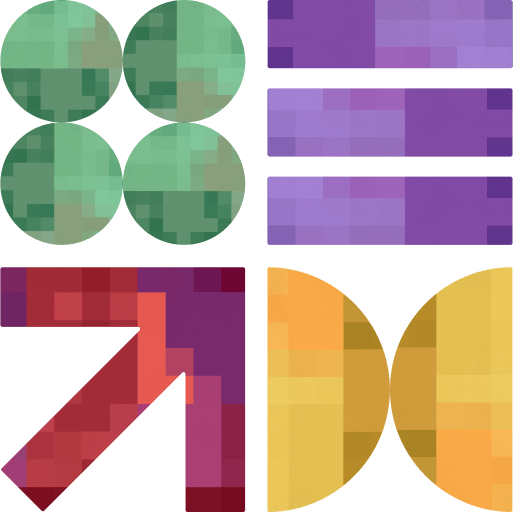8 Industries Transformed by Wearable Application Development

Wearable technology has officially moved beyond fitness trackers. Today, wearable application development is powering real-time decision-making, seamless communication, and personalized experiences across nearly every major industry in the U.S.
For companies looking to stay ahead of the curve, investing in tailored wearable apps is no longer a nice-to-have, it’s a competitive edge.
Take British Airways for example. The airlines experimented with Happiness Blankets, which are smart blankets embedded with wearable sensors that measured passengers’ brainwaves during flights. The blankets changed color to reflect relaxation or stress, helping the airline analyze and improve the in-flight experience.
The Need for Wearable App Development Services
Wearable devices are small, but their impact is massive. For companies across the U.S., wearable apps are unlocking faster operations, safer work environments, and more personalized services. And the trend is only accelerating.
Here’s what wearable apps are making possible:
- Real-time Data Access – Wearable tech enables instant access to live data such as inventory levels, equipment status, or customer insights. This reduces delays and ensures teams act on the most accurate and up-to-date information available.
- Hands-free Operation – With smart glasses, voice-controlled wearables, or wrist devices, employees can perform tasks without juggling tools or paperwork. This minimizes interruptions and allows workers to stay focused on critical operations.
- Enhanced Safety Protocols – Wearables can monitor worker health, fatigue, or hazardous environments in real time. Alerts and automated notifications reduce workplace accidents and create a proactive culture of health and safety.
- Improved Workforce Communication – Smart wearables help teams stay connected, collaborative, and responsive across shifts, locations, or field operations. This is possible via instant alerts, task updates, and even voice interactions.
- Higher Customer Engagement – Having customer-facing industries leverage wearable application development enhances convenience, builds trust, and creates memorable experiences.
So, unless you wish to stay behind, it’s about time that you jump on this bandwagon.
💡 The need for wearable app development services won’t be declining any time soon. By 2030, the global wearable technology market is expected to surpass $186 billion, with North America holding the largest share. And majority of devices demand seamless integration with IoT, AI, and cloud platforms. Building optimized apps ensures low latency, secure data exchange, and scalable performance across connected ecosystems. So, if you’re still wondering when to start planning wearable app development, the answer really is ‘yesterday’!
Industries Thriving with Wearable Devices App Development
If the above benefits intrigue you, you’re probably wondering if you should bring this technology to your own organization. So, here’s how eight industries are being revolutionized by wearables to inspire your next step.
1) Healthcare
The healthcare sector was among the first to adopt wearables, and it continues to lead innovation today. Smartwatches, biosensors, and connected patches enable doctors and nurses to monitor patient vitals without needing to be in the room.
For patients, wearables support chronic disease management. Think heart rate tracking for cardiac patients or glucose monitoring for diabetics. With HIPAA-compliant apps, medical teams can access real-time data to intervene faster.
In the U.S., systems like the VA and Cleveland Clinic are rolling out remote monitoring programs powered by wearable application development reducing readmissions and hospital overcrowding.
2) Education
Wearable tech is helping personalize learning and improve student engagement. Smart bands can track physical activity for younger students. Meanwhile, AR-enabled glasses are transforming how college students interact with lab simulations, historical sites, and even live language learning.
Educational institutions are also using wearable apps for campus safety to send emergency alerts, or leveraging geofencing features to track field trip check-ins.
Universities in Florida and California are piloting wearable-integrated learning programs, using app-connected devices to monitor participation, stress, and comprehension in real time. It’s a promising step forward for more adaptive learning environments.
3) Travel
Wearables in the travel industry are designed to streamline everything from check-in to boarding. Airlines and hotels are using smart wristbands and app-integrated wearables to replace room keys, boarding passes, and even language translation apps.
In Orlando, some resorts use wrist-worn devices that connect to mobile apps to unlock doors, pay for meals, and book activities. All of this tech is synced in real time with customer profiles.
For travelers, this level of convenience translates to faster service and less time fumbling with paper or screens. For businesses, it means better guest flow and stronger data on user behavior.
💡 If you’re in the travel industry, look for wearable technology manufacturers that focus on seamless, real-time experiences. For instance, you can find tech that complements your contactless boarding, luggage tracking, and personalized in-destination alerts. Getting wearables with travel-specific features boosts convenience, safety, and customer loyalty for airlines and tourism brands.
4) Retail
Wearables are no longer just a great retail software development. They’re now an integral part of employee performance and customer experience.
For example, store associates can wear smart badges or headsets linked to apps that guide restocking tasks, notify them about customer requests, or give voice-activated access to inventory data.
Wearables also help with footfall analysis. When integrated into employee uniforms, they can track customer movement patterns and trigger merchandising changes based on real-time behavior.
U.S. brands like Walmart and Target have explored pilot programs for wearable task management tools, helping employees reduce idle time and stay aligned during peak hours.
As wearable application development for retail becomes more tailored to industry needs, expect these integrations to become standard across the floor.
5) Cleaning
The commercial cleaning industry has undergone a quiet but powerful tech transformation. And wearable devicesplay a key role in that shift.
Take National Janitorial Solutions (NatJan) for example. Now part of The Facilities Group (TFG), the company equipped its frontline staff with connected devices to improve accountability, track task completion in real time, and streamline quality assurance audits.
Wearable apps also allow team leads to verify zone coverage, monitor safety conditions, and respond faster to urgent clean-up requests, all without interrupting workflows.
In industries like healthcare where consistency and cleanliness are essential, these capabilities aren’t just convenient. They’re critical.
6) Logistics
In warehouses and supply chain operations, wearable devices are improving everything from picking accuracy to worker safety. Smart gloves, heads-up displays, and wrist-worn barcode scanners allow workers to move freely while staying connected to backend systems.
FedEx, UPS, and Amazon have all tested or deployed wearable systems to optimize movement tracking, improve route planning, and reduce error rates.
Apps designed specifically for these wearables ensure seamless integration with inventory software, dispatch systems, and fulfillment tracking. It’s not just about hardware; it’s about how well it connects to everything else.
7) Public Service
Wearable application development is making massive waves in the public service sector. Especially since firefighters, EMTs, and law enforcement officers need technology that supports real-time decision-making in high-risk situations.
Smart helmets and smartwatches can track body temperature, heart rate, and air quality. In law enforcement, wearable cams and wrist-based alert systems offer added layers of visibility and accountability.
Many cities in the U.S. are also working with wearable app developersto create custom solutions tailored to local emergency response protocols. These apps not only improve field communication, but also store mission-critical data that can be analyzed post-operation for better planning and training.
8) Hospitality
For hotels and resorts, wearable tech creates a frictionless guest experience. Room access, spa appointments, event check-ins, and even restaurant orders can all be managed via wearable-connected apps.
In Las Vegas and Miami, hotel chains have experimented with smart wristbands that let guests charge expenses to their room, control room lighting, or schedule wake-up calls.
On the employee side, hospitality staff use wearables to receive guest service requests, manage room cleaning status, and communicate with front desk teams in real time.
These experiences are only made possible through well-integrated apps—ones that sync with POS systems, guest profiles, and housekeeping workflows behind the scenes.
You Don’t Have to Look Far for a Wearable App Development Company
At DPL, we specialize in creating innovative wearable applications that integrate seamlessly with 4IR technologies to deliver maximum value.
From health trackers to enterprise solutions, our wearable application development team builds scalable, secure, and user-friendly apps that deliver real-time value. Partner with us to automate the small stuff, and unlock new ways to serve your people.
Let us know how we can help via the form below.





